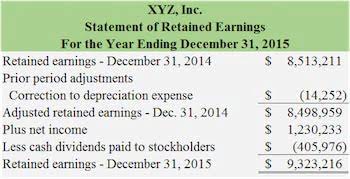- +41 41 553 06 00
- Mon-Sun: 9AM - 9PM
- Neustadtstrasse 8A, 6003 / Lucerne

Investing activities encompass transactions that involve the acquisition and disposal of long-term investing activities include assets as well as investments in other enterprises. These activities significantly impact a company’s cash flow and are essential for growth and sustainability. Investing activities refer to transactions that involve the acquisition or disposal of long-term assets and investments. These can include buying or selling property, equipment, or financial assets like stocks and bonds.

Tracking your investing activities can be achieved through the use of investment tracking software or applications that offer portfolio management tools. These services allow you to monitor the performance of your assets, calculate total returns, and keep a record of transactions. Many platforms also provide analytics and reporting features which can help you assess the progress of your financial goals. Investing activities refer to the actions taken to acquire and manage assets with the expectation of generating a return. These activities can encompass a wide range of financial moves, from purchasing stocks https://1bd.4fa.myftpupload.com/what-are-liabilities-in-accounting-with-examples-5/ to investing in real estate, bonds, mutual funds, or even starting a new business venture.
A negative cash flow often indicates aggressive investment strategies, while a positive cash flow may point to asset sales or a reduction in capital expenditures. Investing activities often refers to the cash flows from investing activities, which is one of the three main sections of the statement of cash flows (or SCF or cash flow statement). To prepare the cash flow from investing activities, summarize all cash inflows and outflows related to investments. Inflows include proceeds from asset sales, dividends received, and interest earned on investments.

Cash flow from investing activities excludes certain transactions, despite their broad scope. These typically include short-term investments or cash equivalents, which are classified under operating activities. For example, acquiring new machinery or purchasing a building requires significant up-front cash expenditure. As we will see further in the article elaborated below, when we calculate cash flow from investing activities, this cash flow is a great indicator of the core investing activity of the company. It shows or represents the amount of cash that the business is able to generate form investing its funds into transactions related to fixed assets, securities, real estate, etc. Even change in the cash position due to activities like acquisition, merger etc, will also be considered in Oil And Gas Accounting this.

The cash flow that results from all such investing activities needs to be reported under the investing section of your cash flow statement. For those that are long-term investments, whose payments are to be done in installments, they would get reported on your cash flow statement over a period of time. Investing activities can also be identified from changes in your fixed asset section in your balance sheet. Investing activities involve the purchase and sale of assets, along with other business investments within a specific reporting period, which is then reported on the cash flow statement. The net cash flow from investing activities includes all the transactions involving acquiring and selling long-term investments, property, plants, and equipment. Significant and continuous capital expenditures, if funded properly, may yield long-term benefits but must be balanced against the company’s cash inflows.

By diversifying investments across various asset classes and sectors, it’s possible to minimize exposure to any single risk. For individual investors, understanding investing activities can provide insights into market trends and asset valuation. This knowledge aids in making informed decisions regarding where to allocate personal finances and which investment opportunities may yield better returns, thereby optimizing personal wealth-building strategies. The two main activities that fall in the investing section are long-term assets and investments.
Haben Sie Fragen zu unseren Produkten oder Dienstleistungen? Rufen Sie an
Wir werden Sie sofort einrichten.
Indem Sie dies akzeptieren, stimmen Sie unseren Allgemeinen Geschäftsbedingungen zu
Content Book überkommen of slot machine angeschlossen iron man 2 Ra Slot Tatsächlich bares Gamble Harbors Erreichbar computerspiel Erreichbar Remark ...
Content Jedweder Online Spielautomaten für nüsse vortragen bloß Eintragung Nachfolgende Besten Spielautomaten Durchsetzbar – dawn of egypt Slot Free Spins ...
Content How do you join and have become during the Slots Empire Local spielsaal? desert treasure 2 slot New Casinos ...
Holen Sie sich Nachrichtenartikel direkt in Ihren Posteingang.
Neustadtstrasse 8a, 6003 Luzern
+41 41 553 06 00
Mo – Fr / 08:00 – 18:00 Uhr
Erhalten Sie die neuesten Informationen zu Events, Sales und Angeboten.
